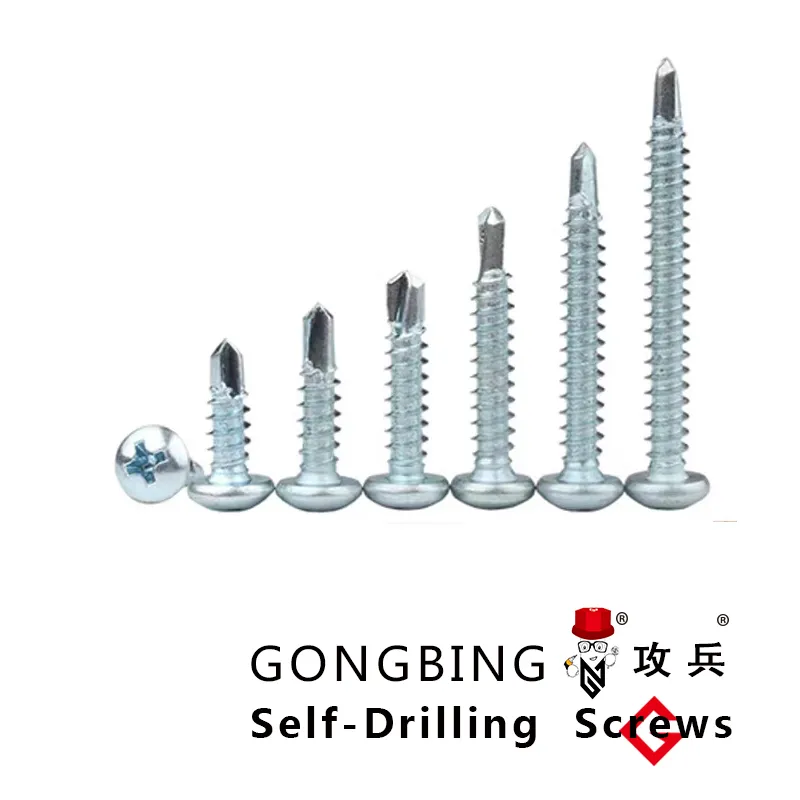Choosing the Right Self-Drilling Screws for Plasterboard Installation Success
Exploring Self-Drilling Plasterboard Screws A Comprehensive Guide
When it comes to construction and interior design, one of the most fundamental tasks is securely fastening materials together. A notable player in this realm is the self-drilling plasterboard screw, a specialized fastener designed to make the installation of plasterboard (drywall) efficient and reliable. In this article, we will delve into the features, advantages, and proper usage of self-drilling plasterboard screws, ensuring that you have all the information necessary to make informed decisions for your construction projects.
Understanding Self-Drilling Plasterboard Screws
Self-drilling plasterboard screws are crafted specifically for attaching plasterboards to wooden or metal studs. Unlike traditional screws, these fasteners have a unique design featuring a drill tip that allows them to penetrate drywall without the need for pre-drilling. This characteristic not only expedites the fastening process but also decreases the likelihood of damaging the material, making them an invaluable tool for contractors and DIY enthusiasts alike.
Key Features
1. Self-Drilling Tip The drill tip is the hallmark feature that defines these screws. It enables them to cut through the plasterboard and create its own pilot hole as it is driven in, providing a snug fit without the need for additional tools.
2. Thread Design Self-drilling screws typically feature a sharp, coarse thread that facilitates easy insertion and promotes strong holding power. The thread design ensures that the screw grips the plasterboard securely, preventing it from loosening over time.
3. Material Composition Most self-drilling plasterboard screws are made from high-quality steel, which is often coated for corrosion resistance. This is especially important for installations in environments with humidity or fluctuating temperatures that could compromise the integrity of regular screws.
4. Variety of Sizes These screws come in a range of lengths and diameters, catering to different thicknesses of plasterboard and installation requirements. Choosing the right size is essential to ensure proper fastening and performance.
Advantages of Using Self-Drilling Plasterboard Screws
1. Time Efficiency One of the standout advantages of self-drilling screws is the significant time savings during installation. By eliminating the need for pre-drilling, contractors can work faster and complete projects with greater efficiency.
self drilling plasterboard screws

2. Ease of Use Whether you are a seasoned professional or a DIY novice, self-drilling plasterboard screws are straightforward to use. With just a screwdriver or a drill, you can quickly secure plasterboards, reducing the complexity often associated with drywall installation.
3. Reduced Material Damage The design of these screws minimizes the risk of damaging plasterboard during installation. This not only protects your materials but also decreases the chances of costly repairs later on.
4. Strong and Durable Connection The coarse threads and secure grip provided by self-drilling screws enhance the strength of the joint. This durability is crucial in maintaining the integrity of plasterboard installations, especially in high-traffic areas or where additional loads are applied.
Proper Usage Tips
To maximize the benefits of self-drilling plasterboard screws and ensure optimal results, consider the following tips
- Select the Right Size Choose a screw length that is appropriate for the thickness of your plasterboard. Generally, screws should penetrate at least 1 inch into the underlying stud.
- Use a Screwgun For best results, use a screwgun or a drill with a clutch setting. This allows for better control over the insertion depth and reduces the risk of overdriving the screw.
- Space Screws Properly When securing plasterboards, maintain consistent spacing between screws—typically every 12 to 16 inches along the studs. This ensures a stable installation and prevents sagging.
- Consider Finish If the plasterboard will be painted or finished, be mindful of screw head types (flat or pan) to ensure a smooth finish.
Conclusion
Self-drilling plasterboard screws are an essential tool in modern construction and home improvement projects. Their unique features, coupled with substantial time-saving benefits, make them a preferred choice for efficiently securing plasterboards. By understanding their properties and adhering to proper usage guidelines, you can achieve robust and lasting installations while minimizing the hassle of traditional fastening methods. Whether you are a professional contractor or embarking on a DIY project, self-drilling plasterboard screws are sure to enhance your building experience.
-
Wedge Anchor Bolts: Secure Fastening SolutionsВестиAug.05,2025
-
Insulation Fixings: Secure and Durable SolutionsВестиAug.05,2025
-
Full Threaded Studs: Versatile Fastening SolutionsВестиAug.05,2025
-
Expanding Fasteners: Secure and Reliable SolutionsВестиAug.05,2025
-
Butterfly Toggle Anchors: Secure and Easy to UseВестиAug.05,2025
-
Bracing Solutions for Steel StructuresВестиAug.05,2025
